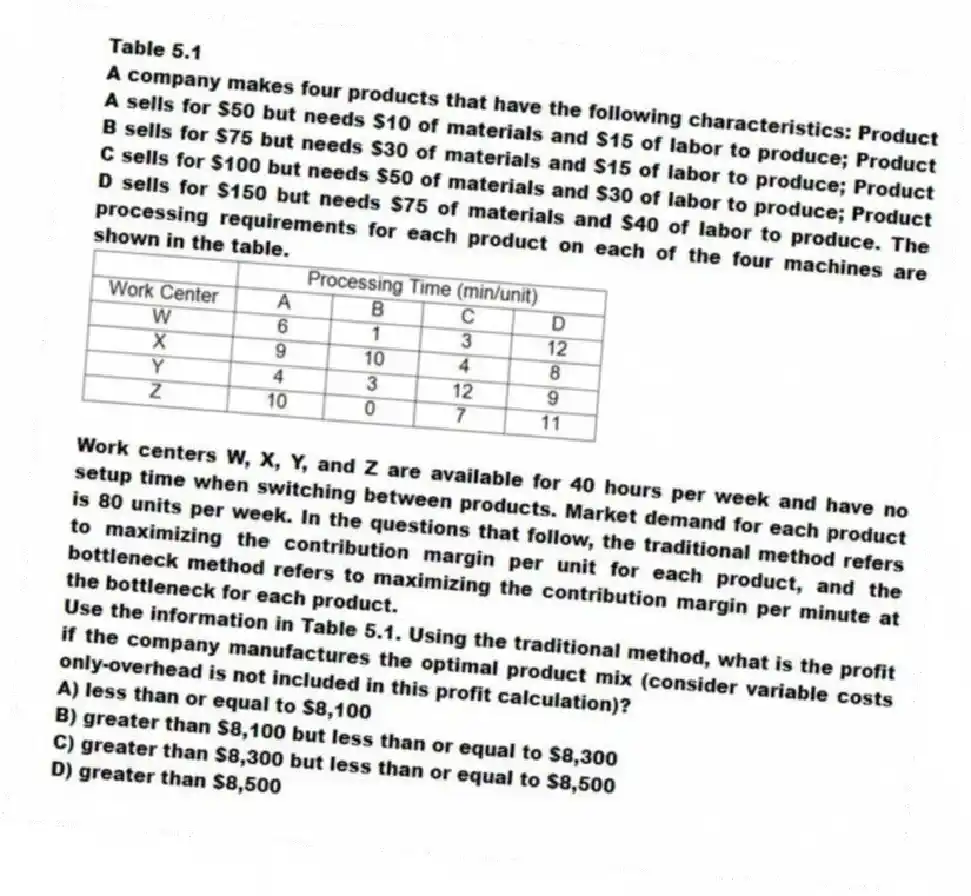
Table 5.1
A company makes four products that have the following characteristics: Product A sells for $50 but needs $10 of materials and $15 of labor to produce; Product B sells for $75 but needs $30 of materials and $15 of labor to produce; Product C sells for $100 but needs $50 of materials and $30 of labor to produce; Product D sells for $150 but needs $75 of materials and $40 of labor to produce. The processing requirements for each product on each of the four machines are shown in the table.

Work centers W, X, Y, and Z are available for 40 hours per week and have no setup time when switching between products. Market demand for each product is 80 units per week. In the questions that follow, the traditional method refers to maximizing the contribution margin per unit for each product, and the bottleneck method refers to maximizing the contribution margin per minute at the bottleneck for each product.
-Use the information in Table 5.1. Using the traditional method, what is the profit if the company manufactures the optimal product mix (consider variable costs only-overhead is not included in this profit calculation) ?
A) less than or equal to $8,100
B) greater than $8,100 but less than or equal to $8,300
C) greater than $8,300 but less than or equal to $8,500
D) greater than $8,500
Correct Answer:
Verified
Q41: Every time a manufacturer uses one resource,
Q42: Which statement about process batches is best?
A)
Q43: Which statement about transfer batch sizes is
Q44: _ is a planning and control system
Q45: Table 5.1
A company makes four products that
Q47: What are two ways a process manager
Q48: A competent operations manager should first eliminate
Q49: In a drum-buffer-rope system, the lot size
Q50: Table 5.1
A company makes four products that
Q51: Variability of a firm's workload may create
Unlock this Answer For Free Now!
View this answer and more for free by performing one of the following actions

Scan the QR code to install the App and get 2 free unlocks

Unlock quizzes for free by uploading documents